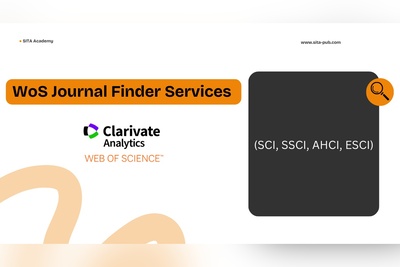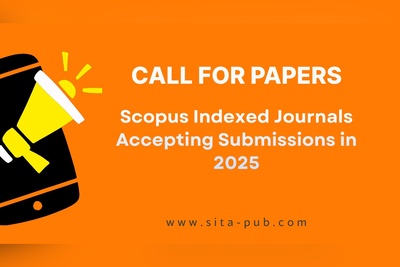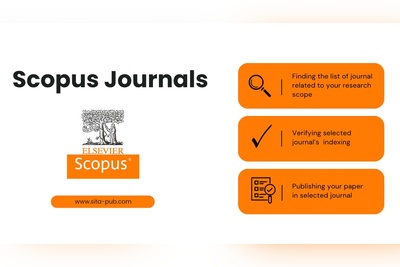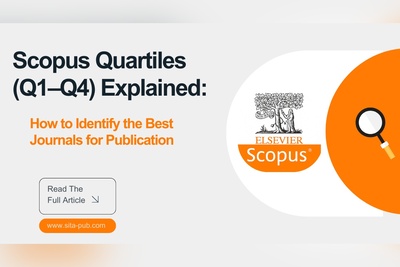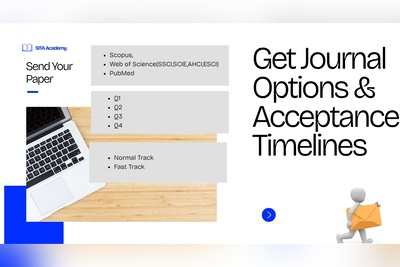September 2025 Scopus Journal List – Find Where to Submit
Stay updated with the September 2025 Scopus journal list. Discover which journals were discontinued, which 373 new journals were accepted, and get practical guidance on where to submit your research. The complete downloadable list is available at the end of this weblog.
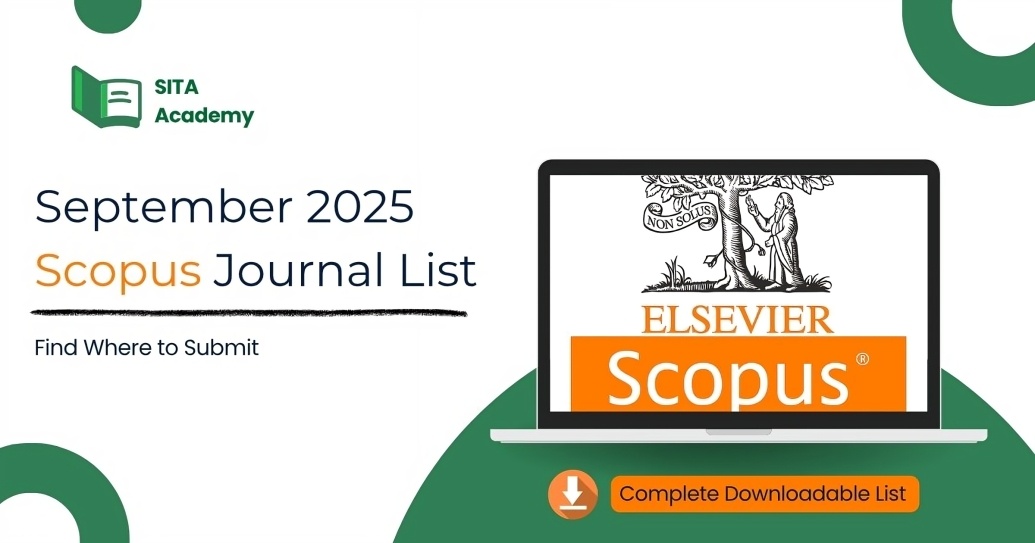
Every month, Scopus updates its database to reflect changes in indexed journals. These updates are essential for researchers, authors, and institutions because they directly affect which journals are recognized for citations, visibility, and academic evaluation. Understanding these updates ensures that researchers make informed decisions about where to submit their work, maintain visibility, and maximize impact.
The Seventh Monthly Update, covering September 2025, brings significant changes: 13 journals were discontinued, all due to anomalous behavior, and 373 new journals were accepted into Scopus. This article presents a complete guide, including the full journal lists, explains the implications of these updates, and provides practical advice for selecting the right journal for submission.
Discontinued Journals: What It Means for Researchers
In September 2025, 13 journals were removed from Scopus indexing. When a journal is discontinued:
New articles will no longer be indexed in Scopus.
Past articles remain archived, but future work will not appear in searches.
Discontinuation signals anomalies or quality concerns, so authors should avoid submitting to these journals to ensure their work is discoverable and recognized.
Reasons Journals Are Discontinued
Journals are typically discontinued for one or more of the following reasons:
Anomalous citation behavior: Excessive self-citations or cross-citations that distort impact metrics.
Ethics and transparency issues: Problems with peer review, plagiarism, or editorial misconduct.
Low performance: Journals failing to meet citation, relevance, or quality standards over time.
Metadata or editorial non-compliance: Failure to follow indexing standards and maintain regular publishing schedules.
Discontinuation is a serious event. It indicates a lack of trust in the journal’s publishing practices and reduces the visibility of articles published after discontinuation. Authors who publish in discontinued journals may face challenges in academic recognition, funding evaluations, or institutional assessments.

List of Discontinued Journals
Here are the 13 journals removed from Scopus in September 2025:
Asian Journal of Agriculture and Biology
CFD Letters
Journal of Advanced Research Design
Journal of Advanced Research in Applied Mechanics
Journal of Advanced Research in Experimental Fluid Mechanics and Heat Transfer
Journal of Advanced Research in Fluid Mechanics and Thermal Sciences
Journal of Advanced Research in Micro and Nano Engineering
Journal of Advanced Research in Numerical Heat Transfer
Journal of Environmental and Earth Sciences
Journal of Neonatal Surgery
Neutrosophic Sets and Systems
Texila International Journal of Public Health
International Journal of Innovative Research and Scientific Studies
Newly Accepted Journals: Opportunities for Submission
In contrast to the discontinued journals, 373 new journals were accepted into Scopus in September 2025. Being accepted means that:
Future articles will be indexed, granting visibility in Scopus searches.
Journals have met Scopus’s evaluation criteria for scope, peer review, editorial standards, and publishing consistency.
Authors gain academic credibility, as publication in Scopus-indexed journals signals adherence to recognized publishing standards.

Sample of Newly Accepted Journals
Here are the first 37 of the 373 newly accepted journals:
Xinli Kexue Tongxun
AI in Precision Oncology
Journal of the European Mosquito Control Association
Russian Ophthalmology of Children
Cuadernos de Filologia Italiana
Revue Francaise d’HistoTechnologie
International Journal of Management Studies
Journal of Rare Diseases
Research in Statistics
Kurdistan Journal for Applied Research
International Journal of Language Education and Applied Linguistics
Journal of Shariah Law Research
Journal for the History of Knowledge
Agro Bali
Annals of Tropical Research
Climate Smart Agriculture
Acta Veterinaria et Zootechnica Sinica
Life Research
Port and Waterway Engineering
IEEE Transactions on Energy Markets, Policy and Regulation
Energy Environmental Protection
Model Theory
Turkish Journal of Colorectal Disease
Aquaculture, Fish and Fisheries
European Journal of Social Science Education and Research
Journal of Education and Training Studies
Aerosol Research
Egyptian Journal of Bronchology
JAAD Reviews
Journal of Urological Surgery
Facts, Views & Vision in ObGyn
Research for All
London Journal of Canadian Studies
Economic and Business Review
Sri Lanka Journal of Forensic Medicine, Science and Law
General Thoracic and Cardiovascular Surgery Cases
Hematology Transfusiology Eastern Europe
Benefits of Publishing in Newly Indexed Journals
Scopus Indexing: Articles are discoverable globally and searchable in major academic databases.
Visibility and Credibility: Being indexed signals adherence to recognized peer review and publishing standards.
Future Citation Potential: Over time, newly indexed journals may gain recognition and citations in their fields.
Diverse Fields: The new journals cover medicine, engineering, social sciences, education, law, environmental studies, and more, providing opportunities for interdisciplinary research.
Established vs. New Journals: Key Differences
Many researchers ask: “Does a newly accepted Scopus journal have the same impact as an established one?”
Key Differences
Citation History: Established journals have metrics like CiteScore, SJR, and SNIP, reflecting long-term visibility. New journals start with little or no citation data.
Reputation: Older journals are well-recognized among researchers and institutions; new journals are still building credibility.
Indexing Stability: Established journals are less likely to be discontinued, whereas new journals must consistently demonstrate quality.
Practical Advice
High-impact or strategic publications: Prefer established journals.
Emerging fields or niche topics: Newly accepted journals may be valuable if the scope matches your research.
Always assess the editorial board, peer review process, and past publications before submitting.
Practical Checklist for Authors Before Submission
Before submitting a paper, follow this step-by-step checklist to ensure your work is indexed and discoverable in Scopus:
Check the journal’s current indexing status: Use the Scopus Source Title List to confirm the journal is active.
Confirm it’s not discontinued: Avoid journals recently removed from Scopus.
Evaluate journal quality: Review editorial policies, transparency, and publication history.
Examine past issues and authors: Look for credibility, consistency, and alignment with your research area.
Watch for red flags: Sudden spikes in citations, self-citation manipulation, or aggressive solicitation may indicate issues.
Make strategic decisions: Choose established journals for maximum impact; consider new journals for emerging or interdisciplinary topics.
How Institutions Should Adapt
Universities, research centers, and funding bodies should act on these updates to maintain accurate evaluation and guidance systems:
Update approved journal lists: Include newly indexed journals and remove discontinued titles.
Adjust evaluation metrics: Publications in discontinued journals may not count toward performance assessments.
Promote awareness: Encourage researchers to verify journal status before submission.
Support strategic publishing: Provide guidance for emerging fields and interdisciplinary research opportunities.
Opportunities in the September 2025 Update
The 373 newly accepted journals provide researchers with fresh opportunities to publish in Scopus-indexed outlets.
Practical ways to leverage these opportunities:
Emerging fields: New journals often cover specialized or interdisciplinary topics.
Early adoption: Publishing early in a newly indexed journal can establish you as a leading contributor in your field.
Diverse publication venues: The range of disciplines allows expanded collaboration across research areas.
Cautionary reminder: Avoid discontinued journals to protect visibility and credibility.
Key Takeaways
13 journals discontinued: Avoid submitting to these due to anomalous behavior.
373 newly accepted journals: Present fresh opportunities, especially for emerging research areas.
Strategic publishing: Balance risk and impact by selecting journals carefully based on indexing, scope, and quality.
Practical monitoring: Regularly check Scopus updates for informed decisions.
Institutional guidance: Universities and research bodies should adjust evaluation and support practices according to updates.
Conclusion
The September 2025 Scopus update highlights the dynamic nature of academic publishing. With 13 journals discontinued and 373 newly accepted, researchers and institutions must stay informed to maintain visibility, credibility, and citation impact.
By understanding the implications of these updates and following a practical checklist for journal selection, authors can ensure their work reaches the widest audience, remains recognized in evaluation systems, and contributes meaningfully to their field.
Proactive monitoring of journal quality and status ensures that your research is published in trustworthy, discoverable venues.
References
ResearchGate - Last Update of Scopus Indexed Journal’s List - September 2025
Need help selecting the right Scopus journal for your research?
SITA Academy offers free journal selection assistance. Our experts guide you in recommending the best journals in your field, taking into account scope, indexing, visibility, and impact. Maximize the reach of your research with personalized guidance.
Verified Contact Channels
If you have any questions, inquiries, or would like to learn more about our services, please don't hesitate to reach out to us. Our dedicated team is ready to assist you.





